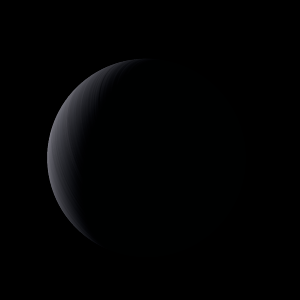|
|
Space Astro
|
Info for exoplanet "Rihi"
| Scientific (actual) data |
|---|
| Name | WASP-174 b |
| Planet status | Confirmed |
| Planet mass | 0.33 |
| Radius | 1.437 |
| Orbital period | 4.2337 |
| Semi major axis | 0.05503 |
| Orbit eccentricity | 0 |
| Inclination | 83.78 |
| Discovered | 2018 |
| Updated | 2019-09-20 |
| Tzero tr | 2458550 |
| Lambda angle | 31 |
| Impact parameter | 0.953 |
| K | 36.1 |
| Temperature (kelvin) | 1528 |
| Publication | Published in a refereed paper |
| Detection type | Primary Transit |
| Mass measurement type | Radial Velocity |
| Radius measurement type | Primary Transit |
| Star name | WASP-174 |
| Right ascension | 195.8° |
| Declination | -41.38° |
| Star metallicity | 0.12 |
| Star mass | 1.28 |
| Star sp type | F6V |
| Star age | 1.65 |
| Star temperature | 6400 |
| Wikipedia article | WASP-174 b |
Back
| |
| Fictional info (?) |
|---|
| Suggested name | Rihi |
| Planet type | Hot gas giant |
|
| Atmosphere | Carbon dioxide | 43% |
| Ethane | 20% |
| Nitric oxide | 18% |
| Hydrogen | 16% |
| Methane | 2.1% |
| 2H2O | 0.22% |
| Helium | 0.001% |
| Molecular hydrogen | 0.00038% |
| Atmospheric pressure | 50 bar |
 |
| No known satellites |
| Google search for Rihi |
|
Website by Joachim Michaelis
|
|
|
|